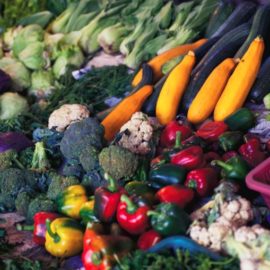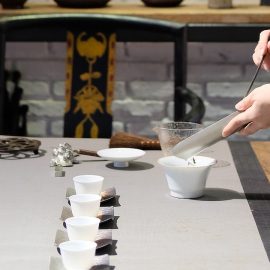
How did our ancestors keep food from spoiling before refrigeration? What surprising methods and materials were used throughout the history of food preservation?
In his book At Home, Bill Bryson explores how humans transitioned from consuming local foods immediately to preserving them for extended periods. The history of food preservation reveals several fascinating innovations—alongside a few disturbing practices.
Read on to learn how these preservation breakthroughs transformed the way we eat.
A History of Food Preservation
In his book, Bryson provides a history of food preservation, explaining that people used to have to eat what they could produce locally and consume quickly. Meat could last only a day before going bad, and milk spoiled within hours.
(Shortform note: People weren’t completely at the mercy of food spoilage before the mid-1600s. In Salt, Kurlansky writes that people used salt to preserve food for thousands of years before modern preservation methods. They used two main techniques: curing and pickling. People cured meat and fish by packing them in salt to kill bacteria and remove moisture, making the food last much longer. They also pickled vegetables and fruits by letting the foods ferment in salty water inside sealed jars.)
Bryson writes that food was often contaminated both intentionally and unintentionally. Merchants sometimes used cheap or dangerous additives to stretch costly ingredients or enhance the appearance of foods. For example, some would add gypsum, sand, and dust to sugar or use lead compounds to make foods such as bakery products and cheese more visually appealing. However, Bryson notes that most food contamination happened by accident as a result of poor hygiene—bakeries, for instance, were full of cobwebs, insects, and vermin that got into the food.
(Shortform note: While contaminated food may seem like an issue of the past, companies continue to deliberately tamper with food products to increase profits. These altered foods make up about 1% of the global food industry and cost the industry up to $40 billion per year. Common food adulterations include diluting honey, syrup, and olive oil with cheaper sweeteners and oils, and adding plant materials (such as stems) and food dyes to spices.)
Bryson discusses several innovations in food preservation that transformed the way people ate.
#1: Ice
In the 1800s, American businessman Frederic Tudor created the first ice trade, shipping frozen blocks out from New England lakes. As a result, ice-cooled railway cars could transport perishable foods across the country without spoiling.
(Shortform note: Refrigerated transport, particularly railway cars, fueled America’s westward expansion. Once refrigeration became widespread in the 1870s, meat production exploded—beef exports to Britain jumped from 109,500 pounds to 72 million pounds. US settlers moved west to claim land for cattle, also deliberately slaughtering millions of buffalo to starve and force Native American tribes off their lands.)
#2: Mason Jars
Patented in 1859, Mason jars revolutionized food storage with their airtight lid. This invention allowed people to safely preserve food for much longer than before.
(Shortform note: Before Mason jars, Napoleon Bonaparte played an important role in food preservation history. In 1795, he offered 12,000 francs to anyone who could develop better food preservation methods for his army. Nicolas François Appert won this prize by creating a method of heating, boiling, and sealing food in airtight glass jars, creating the basic technology behind the Mason jar.)
#3: Iron Cans
In the early 1800s, cans were made of heavy iron and extremely difficult to open—people had to use hammers and chisels, and soldiers in the field resorted to shooting or stabbing the cans to access the food. Canning didn’t become truly practical until lighter materials were developed that enabled mass production. Though inventors patented many cutting tools, they were either unsafe or hard to operate—the safe can opener that we know of only appeared in 1925.
(Shortform note: A major scandal nearly destroyed the canning industry in 1852. British Navy inspectors discovered that supplier Stephan Goldner had filled hundreds of cans with rotten meat and animal parts instead of proper beef. Goldner had won government contracts by cutting costs, using cheap labor and inadequate cooking processes at his Romanian factory, but the cost-cutting measures ultimately resulted in over 600,000 pounds of meat being discarded. Even a decade later, many Europeans and Americans remained skeptical of canned foods.)
However, Bryson points out that these innovations in food preservation mainly benefited the middle and upper classes. While the wealthy enjoyed increasingly varied dishes, with recipe books showing how to prepare elaborate multicourse meals using both local and imported ingredients, many working people still survived on basic foods such as bread, potatoes, and occasionally meat.
(Shortform note: This pattern of unequal access to quality and varied foods continues today. Research across 150 countries shows that wealthy nations enjoy three and a half times more diverse diets than poorer countries. As in the past, poor households consume more staples such as rice and cereals, spending around 25% of their food budgets on these items. In contrast, wealthy households spend only 3% on staples. Ultimately, food access remains closely tied to wealth, much as it was in earlier times when only the wealthy could afford preserved and imported delicacies.)






